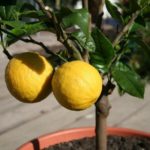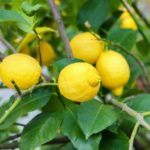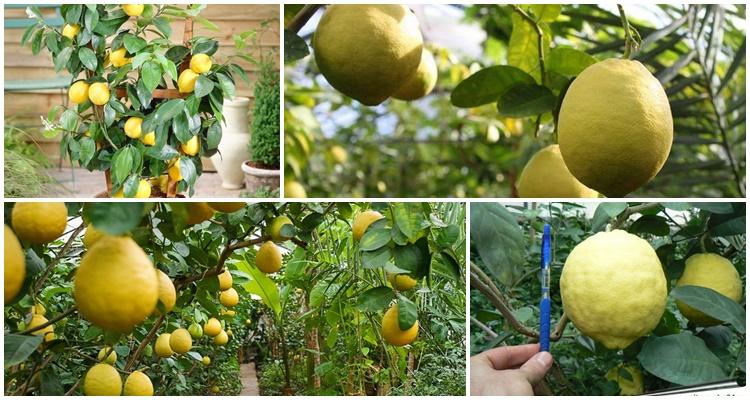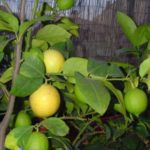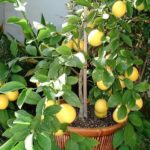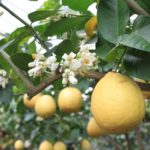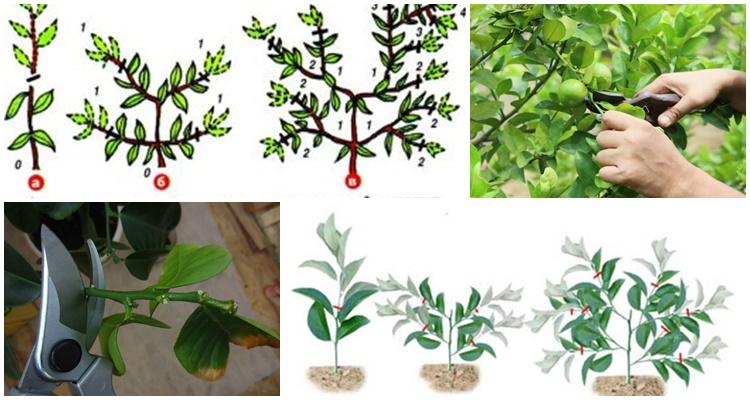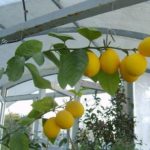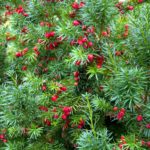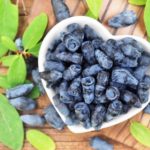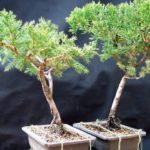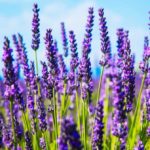The Jubilee lemon variety was first grown in Uzbekistan. Selection work to create this crop was carried out by Zainiddin Fakhrutdinov. Novogruzinsky and Tashkent lemons. As a result, it was possible to obtain a plant with high yield parameters and large fruits. For the cultivation of a crop to be successful, it must be provided with suitable conditions.
Description and main characteristics
This crop is an evergreen plant. Their height is no more than 1.5 meters. The variety is considered large-fruited. It is permissible to grow it at home. Lemons are characterized by abundant flowering. Sometimes bouquet shoots are formed to the detriment of growth.
The seedlings develop well without a rootstock. The crown is characterized by compact dimensions. It is formed by pruning. The shoots have a strong structure and are directed upward. Sometimes they bend under the weight of the fruit.
The peel is yellow in color and medium thick. Inside there is light yellow pulp and many seeds. The ripening of lemons lasts 8-10 months - it all depends on the lighting parameters and compliance with the rules of care.
Pros and cons of the variety
Growing in the natural environment and at home
The culture is resistant to the influence of harmful factors and undemanding to the composition of the soil. At the same time, lemon requires high-quality lighting. It is better to choose slightly acidic soil.
Culture is characterized by uneven development. In some periods, branches and leaves are formed very actively, in others there is a period of dormancy. In summer the temperature should be more than +18 degrees, in winter – about +14.
In warm weather, the plant can be moved to the garden and placed in the shade of a tree.It is recommended to cover the pot to avoid overheating. Spraying should be done early in the morning. The culture needs high humidity. In summer it is permissible to do this daily, and in winter - only as needed.
Subtleties of cultivation and care
In order for a culture to grow and develop normally, it needs proper care. In this case, it is necessary to follow a number of rules.
Optimal conditions
When growing a crop at home, it requires sufficient lighting. However, the tree can also tolerate a lack of lighting. For normal growth, the crop must be in the sun for 2-3 hours. Development in partial shade provokes rapid elongation of the trunk to the detriment of flowering and fruit development.
The optimal temperature is +18-20 degrees. The culture does not tolerate sudden temperature fluctuations. Therefore, it is recommended to take the pot of lemon out to the balcony in the warm season.
Landing rules
To plant in a pot, place drainage and add soil. Make a 2-3 centimeter depression in the central part of the pot. Place a lemon seed there, sprinkle with soil and moisten. Crops require a temperature of +20-22 degrees. After 2-3 weeks, sprouts will appear.
Watering and fertilizing
From May to September it is recommended to water the lemon every day. The rest of the time, the soil should be moistened twice a week. The soil should dry completely between waterings. For active development, the crop requires fertilizers. Lemons should be fertilized with special or complex compounds. For young plants, fertilizing in spring and summer should be done at intervals of 50 days. In this case, adult crops are fertilized at intervals of 15-20 days.
The best organic fertilizers are wood ash or herbal infusions. It is recommended to water the tree a couple of hours before fertilizing.
Trimming
It is recommended to do pruning based on your goals. If the plant is grown for decoration, it is worth forming a compact and small crown. To get fruit, you need to trim the branches in a different way. At the end of January it is worth cutting off the top of a two-year-old plant. After 30-40 days, additional branches will appear from the lateral buds. A year later, new branches are formed that need to be removed and 3-4 internodes left. This should be done before third-order branches are formed.
Transfer
Within a year, the roots completely envelop the soil ball. Therefore, it is recommended to replant lemons every year. After 5 years, the plant should be moved at intervals of 3 years. It is better to replant by transferring a clod of soil.
Wintering
It is recommended to insulate the pot with the plant for the winter. Foam or polyethylene is suitable for this. The procedure is required to ensure that the lump of soil does not overcool. Otherwise, this will lead to the appearance of root pathologies.
Diseases and pests
The crop may suffer from parasite attacks, which has a bad effect on its development. Most often, lemons are attacked by scale insects. Insecticides such as “Aktellik” or “Aktara” will help you cope with parasites. They should be used at intervals of 2 weeks.
Reproduction of lemon Jubilee
It is recommended to propagate lemons by seeds or cuttings. The second method helps to quickly get a harvest. To do this, it is recommended to cut a shoot measuring 15 centimeters from the bush. The cut should be treated with a root formation stimulator.
Then lower the cutting into water. After a couple of weeks, roots will appear. At this stage, it is permissible to move the bush into a pot.
Harvesting and application
The fruits can be harvested when they turn yellow. However, it is acceptable to consume greener lemons. It is recommended to eat the fruits fresh or use them to prepare various dishes. Jubilee lemon is considered an excellent ornamental plant that can be grown at home. In order for a tree to grow and bear fruit normally, it needs good care.

